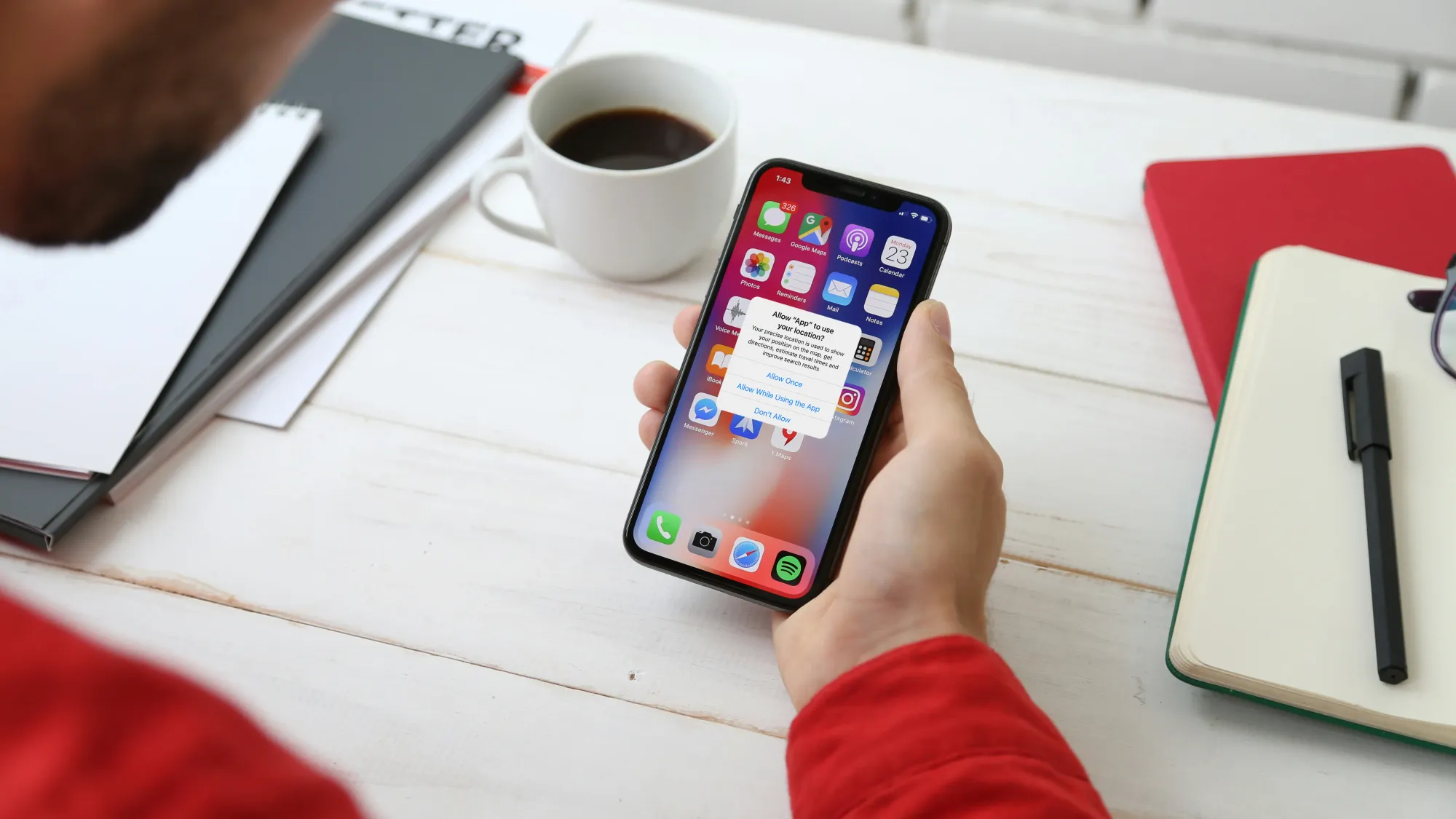How to Manage App Permissions in Flutter: A Developer's Guide

In our increasingly digital world, app permissions have become a hot topic. With global app downloads hitting a staggering 257 billion in 2023, users are more aware than ever about their digital privacy. As Flutter Developers, it's our job to handle these permissions with care and respect for our users.
Getting to Know Flutter and App Permissions
Flutter, Google's brainchild for cross-platform development, has taken the dev world by storm. One of the key challenges we face when building Flutter apps is managing permissions effectively. Enter the permission handler flutter - our trusty sidekick in this adventure.
The permission_handler package is like a Swiss Army knife for permission management. It gives us a unified way to handle permissions across both Android and iOS, making our lives as developers much easier
Speaking of making lives easier, have you ever wondered why React Native and Flutter outperform Kotlin and Swift in certain scenarios? It's partly due to this kind of cross-platform efficiency.
Why Should We Care About Permissions?
Before we dive into the nitty-gritty, let's talk about why proper permission management is crucial:
- It's about trust: When we're upfront about permissions, users feel more comfortable with our app.
- App stores are watching: Both Google and Apple have their eyes on how we handle permissions.
- Smooth sailing: Well-managed permissions mean fewer interruptions for our users.
- Staying on the right side of the law: With data protection laws popping up everywhere, explicit consent is key.
Permission Handler
Let's get our hands dirty. First, we need to add the permission_handler flutter package to our project. Pop this into your pubspec.yaml:
dependencies:
permission_handler: ^10.0.0Then run flutter pub get, and we're off to the races.
Asking Nicely: Requesting Permissions
The flutter permission handler makes asking for permissions a breeze. Here's how we might ask to use the camera:
import 'package:permission_handler/permission_handler.dart';
Future<void> requestCameraPermission() async {
PermissionStatus status = await Permission.camera.request();
if (status.isGranted) {
// Time to take some selfies!
} else if (status.isDenied) {
// No camera for us, sadly
}
}
This snippet shows how we use permission in a flutter to ask for camera access. It's like knocking on the door before entering - polite and necessary.
Checking If We're Welcome: Permission Status
Before barging in and requesting permissions, it's good manners to check if we already have them:
Future<void> checkCameraPermission() async {
PermissionStatus status = await Permission.camera.status;
if (status.isGranted) {
// We're already in the VIP club
} else if (status.isDenied) {
// Looks like we need to ask nicely
}
}
Juggling Multiple Permissions
Sometimes our app is like a Swiss Army knife - it needs access to multiple features. Here's how we can ask for several permissions at once:
Future<void> requestMultiplePermissions() async {
Map<Permission, PermissionStatus> statuses = await [
Permission.camera,
Permission.storage,
Permission.location,
].request();
statuses.forEach((permission, status) {
print('$permission: $status');
});
}
This approach is handy when our app needs to be a jack-of-all-trades.
The Storage Conundrum
One permission that often trips up developers is storage access. The MANAGE_EXTERNAL_STORAGE permission flutter is crucial for apps that need to play around with files.
Here's a simple way to ask for storage permission:
Future<void> requestStoragePermission() async {
PermissionStatus status = await Permission.storage.request();
if (status.isGranted) {
// Time to store some data!
} else if (status.isDenied) {
// No storage for us, back to the drawing board
}
}
Just remember, for Android 11 and up, we need the MANAGE_EXTERNAL_STORAGE permission for full access. It's like getting the master key to the house.
Lights, Camera, Permission!
Camera permission is another common request in our apps. Here's a more detailed flutter permission handler example for managing camera access:
import 'package:permission_handler/permission_handler.dart';
class CameraPermissionManager {
Future<bool> requestCameraPermission() async {
PermissionStatus status = await Permission.camera.request();
return status.isGranted;
}
Future<bool> checkCameraPermission() async {
PermissionStatus status = await Permission.camera.status;
return status.isGranted;
}
Future<void> openAppSettings() async {
await openAppSettings();
}
}
This class gives us a toolbox for handling camera permissions - requesting, checking, and even opening settings if needed.
When "No" Means "No"
Sometimes, users might decide they really don't want to give us permission. In that case, we need to respect their decision but also provide a way back if they change their mind:
Future<void> handlePermanentDenial() async {
bool isPermanentlyDenied = await Permission.camera.isPermanentlyDenied;
if (isPermanentlyDenied) {
// Time to show them the way to settings
openAppSettings();
}
}
This flutter open app permission settings functionality is like leaving the door open for users who might want to come back.
Best Practices: The Do's and Don'ts
To keep our users happy and our apps running smoothly, here are some golden rules:
- Only ask for what you need, when you need it
- Be transparent about why you need permissions
- Have a Plan B for when permissions are denied
- Use permission groups wisely (especially on Android)
- Stay on your toes - permissions can change while the app is running
When choosing your app's framework, it's worth considering Flutter vs React Native. Both have their strengths in handling permissions, but Flutter's unified API can make life easier across different platforms.
A Touch of Style: Light and Dark Mode
While we're talking about permissions, let's not forget about user preferences in app appearance. Implementing light and dark modes can make our app more comfortable for users:
import 'package:flutter/material.dart';
class MyApp extends StatefulWidget {
@override
_MyAppState createState() => _MyAppState();
}
class _MyAppState extends State<MyApp> {
ThemeMode _themeMode = ThemeMode.light;
void toggleTheme() {
setState(() {
_themeMode = _themeMode == ThemeMode.light ? ThemeMode.dark : ThemeMode.light;
});
}
@override
Widget build(BuildContext context) {
return MaterialApp(
theme: ThemeData.light(),
darkTheme: ThemeData.dark(),
themeMode: _themeMode,
home: MyHomePage(toggleTheme: toggleTheme),
);
}
}
This example shows how to add a light/dark mode toggle to our app. It's like giving users a choice between coffee and tea - everyone has their preference.
Changing the Default Look
We can also set up our app to follow the system's lead when it comes to theming:
MaterialApp(
theme: ThemeData(
primarySwatch: Colors.blue,
brightness: Brightness.light,
),
darkTheme: ThemeData(
primarySwatch: Colors.indigo,
brightness: Brightness.dark,
),
themeMode: ThemeMode.system, // Let the system decide
// ...
)
By using ThemeMode.system, our app becomes a chameleon, adapting to the user's system preferences.
Wrapping It Up
Managing app permissions in Flutter is like being a good neighbor - it's all about respect and communication. The permission_handler package is our friendly guide in this journey, helping us create secure and user-friendly apps.
Remember, good permission management is not just about following rules - it's about building trust with our users and creating apps that people love to use.
Frequently Asked Questions
To help you navigate the world of app permissions in Flutter, here are answers to some commonly asked questions:
1. How do I handle permissions in Flutter?
Flutter uses the permission_handler package to manage app permissions. You can request permissions using methods like Permission.camera.request() and check permission status with Permission.camera.status. Here's a quick example:
import 'package:permission_handler/permission_handler.dart';
Future<void> requestCameraPermission() async {
if (await Permission.camera.request().isGranted) {
// Permission granted, proceed with camera usage
} else {
// Permission denied, handle accordingly
}
}
2. What's the difference between permission_handler and flutter_permission_handler?]
There isn't a package called flutter_permission_handler. The correct package is permission_handler. Developers sometimes mistakenly refer to it as "flutter permission handler" because it's used in Flutter projects.
3. How can I open app settings in Flutter?
To open the app settings, you can use the openAppSettings() method from the permission_handler package:
import 'package:permission_handler/permission_handler.dart';
Future<void> openSettings() async {
await openAppSettings();
}
4. How do I request multiple permissions at once?
You can request multiple permissions simultaneously using the request() method on a list of permissions:
Future<void> requestMultiplePermissions() async {
Map<Permission, PermissionStatus> statuses = await [
Permission.camera,
Permission.microphone,
Permission.storage,
].request();
// Handle the results
}
5. How do I handle the MANAGE_EXTERNAL_STORAGE permission in Flutter?
For Android 11 (API level 30) and above, use the Permission.manageExternalStorage permission:
Future<void> requestManageExternalStorage() async {
if (await Permission.manageExternalStorage.request().isGranted) {
// Permission granted
} else {
// Permission denied
}
}
Remember, this permission requires the user to grant it through system settings.
6. How can I check if a permission is permanently denied?
You can use the isPermanentlyDenied property:
if (await Permission.camera.isPermanentlyDenied) {
// The user opted to never again see the permission request dialog for this
// app. The only way to change the permission's status now is to let the
// user manually enable it in the system settings.
openAppSettings();
}
7. How do I handle permissions differently for iOS and Android?
While the permission_handler provides a unified API, some permissions are platform-specific. You can use platform checks:
if (Platform.isIOS) {
// iOS-specific permission handling
} else if (Platform.isAndroid) {
// Android-specific permission handling
}
Need a Helping Hand?
If you're feeling overwhelmed or need expert input, partner with a Flutter app development company. Our team knows the ins and outs of Flutter development, from permission handling to creating stunning UIs with dynamic theming. We're here to help you build the Flutter app of your dreams. Happy coding, and may your permissions always be granted!
